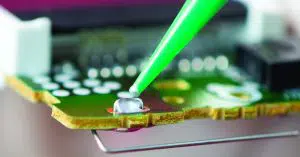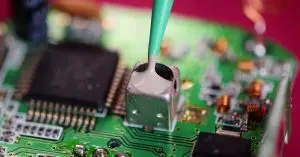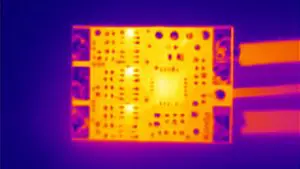Master Bond EP3HTS-TC is a one part, NASA low outgassing rated epoxy, with an outstanding thermal conductivity of 16-17 W/(m·K). It cures rapidly at temperatures of around 250-300°F [~ 125-150°C], and has an unlimited working life at room temperature. The material features a thixotropic paste consistency, and is not pre-mixed and frozen. It is well suited for automatic … [Read more...]
One Part Fast Curing Epoxy for Bonding and Small Encapsulation Applications
Master Bond EP4EN-80 is a NASA low outgassing approved epoxy, which can cure at temperatures as low as 80°C, unlike conventional one component heat curing systems. It features a quick cure profile at 65°C for 90 minutes plus 30 minutes at 80-85°C. The epoxy system requires no mixing prior to use, has a very low viscosity of 600-1,800 cps and contains no solvents. Free flowing … [Read more...]
Keeping Cool When You are Heading to the Sun
The Parker Solar Probe is defying common sense and pushing the limits of thermal performance via innovative design as it loops and approaches to within just a few million kilometers from our Sun. Thermal management in outer space is hard, that’s not news. Even after the heat has been conveyed by conduction to the outer surface of the spacecraft, there’s only radiation as a … [Read more...]
Heat Spreader Efficiency Improvements by Addition of Latent Heat Solution Materials
Introduction Electronics thermal management has become an increasingly important design focus as devices have become more constrained, more powerful, more expensive and more ubiquitous. To manage temperatures, particularly in mobile devices, thermal engineers typically use higher thermal conductivity components and materials. Electrical engineers strive to spatially … [Read more...]
ASHRAE Technical Committee 9.9: Mission Critical Facilities, Data Centers, Technology Spaces, and Electronic Equipment
Nomenclature A1, A2, A3, A4 ASHRAE allowable thermal envelopes as defined in Thermal Guidelines for Data Processing Environments that represent where IT manufacturers test equipment to ensure functionality ASHRAE American Society of Heating, Refrigerating and Air-Conditioning Engineers CAGR Compound Annual Growth Rate CITE ASHRAE Compliance for IT … [Read more...]
- « Previous Page
- 1
- …
- 13
- 14
- 15
- 16
- 17
- …
- 33
- Next Page »














